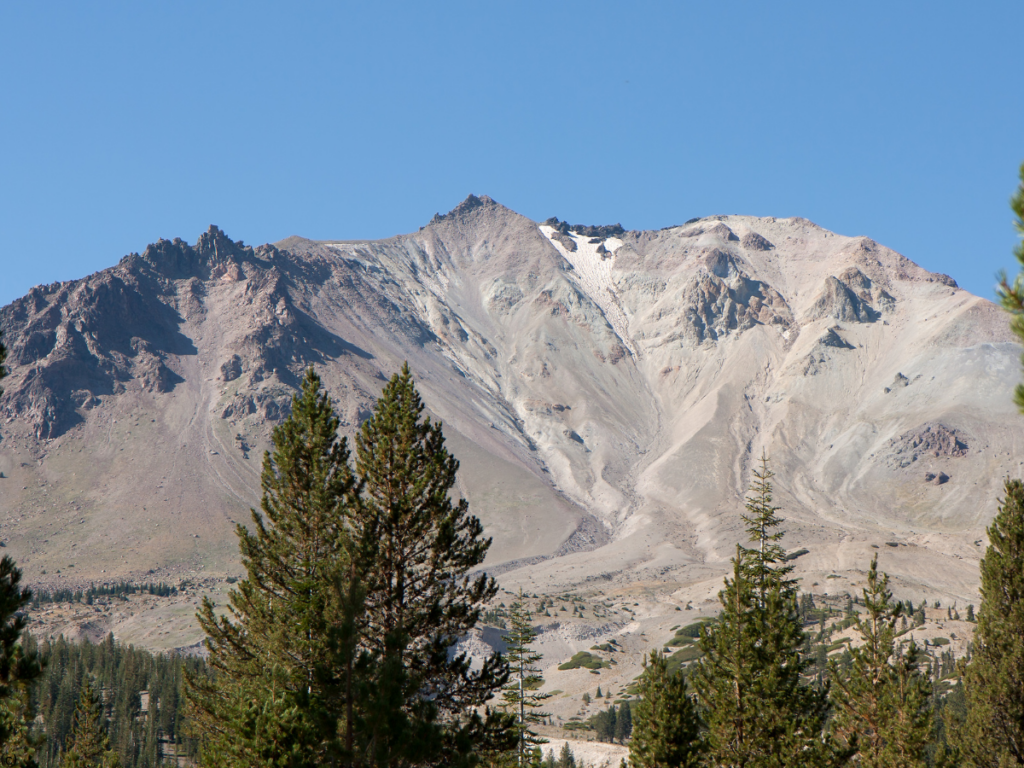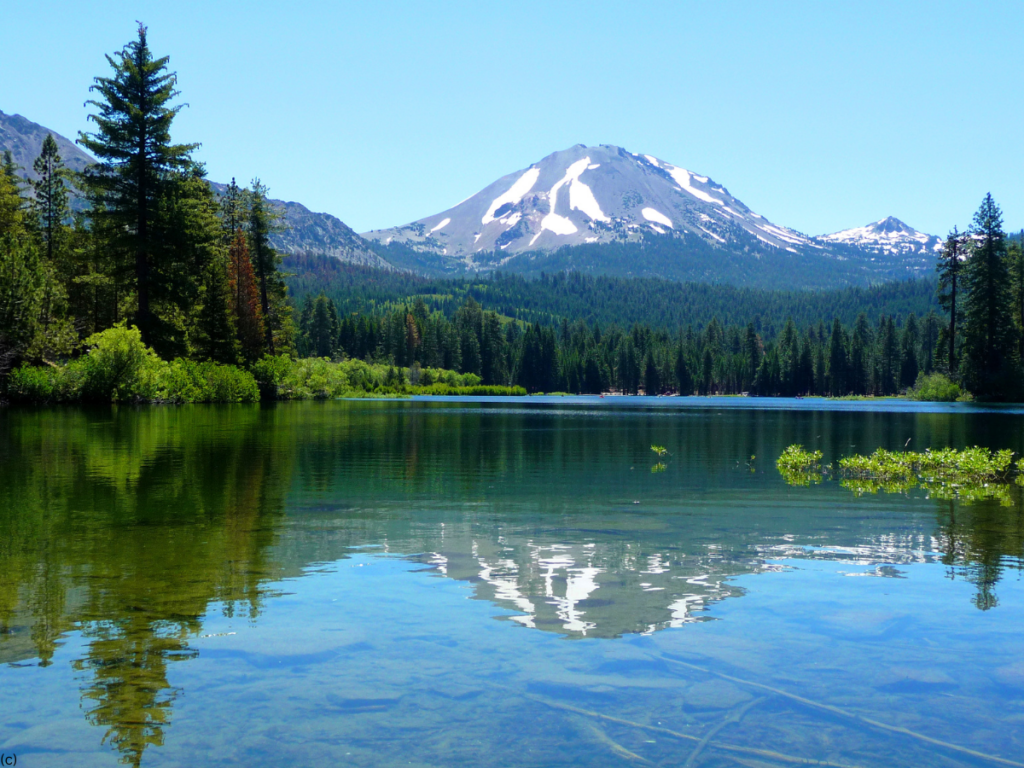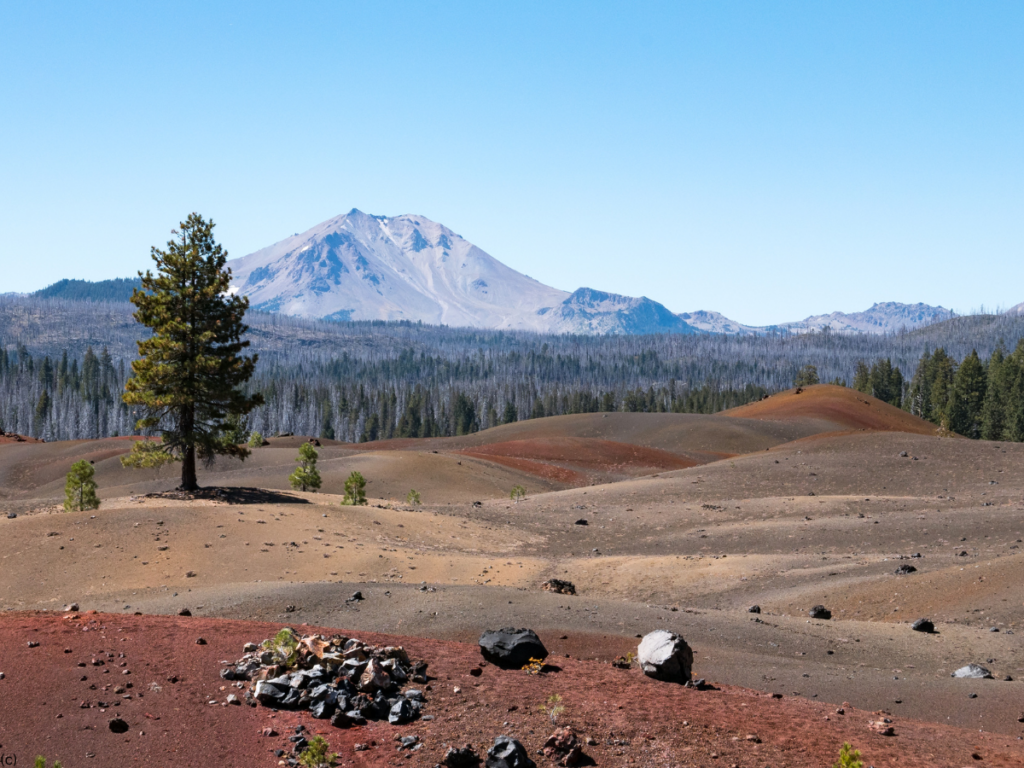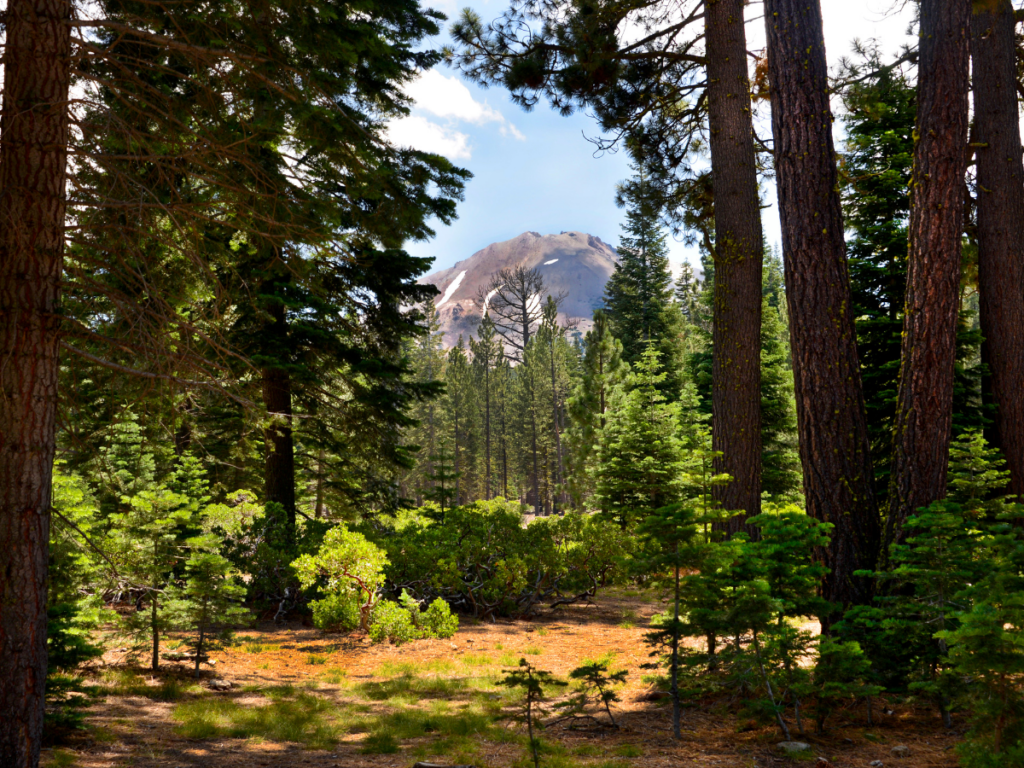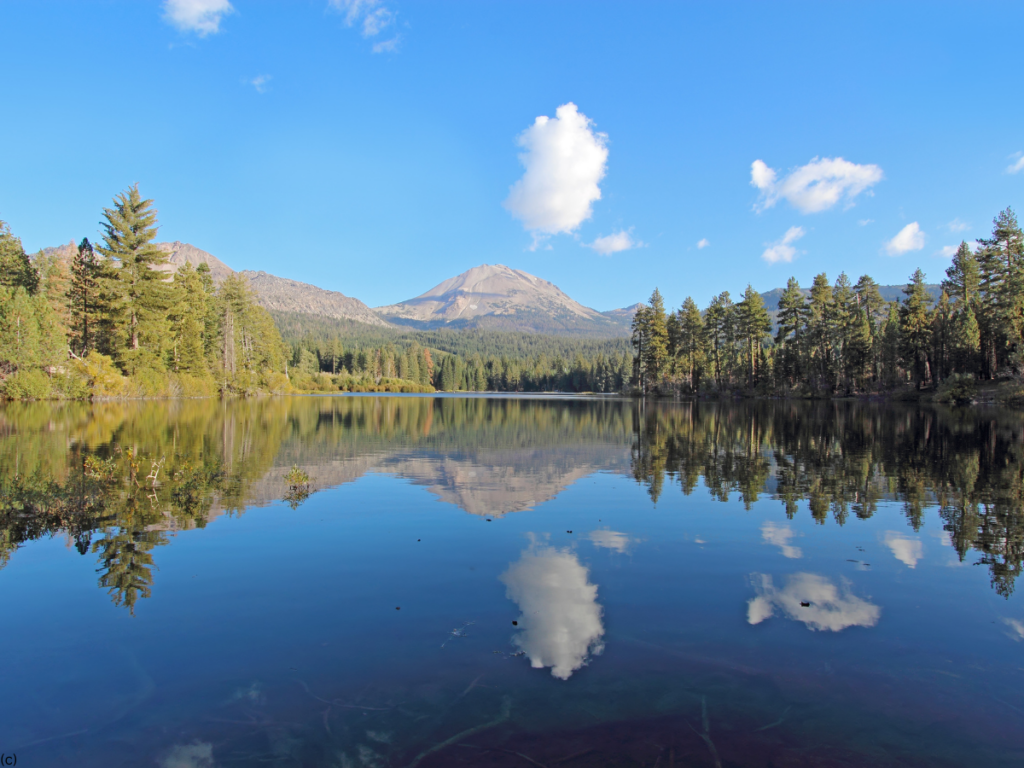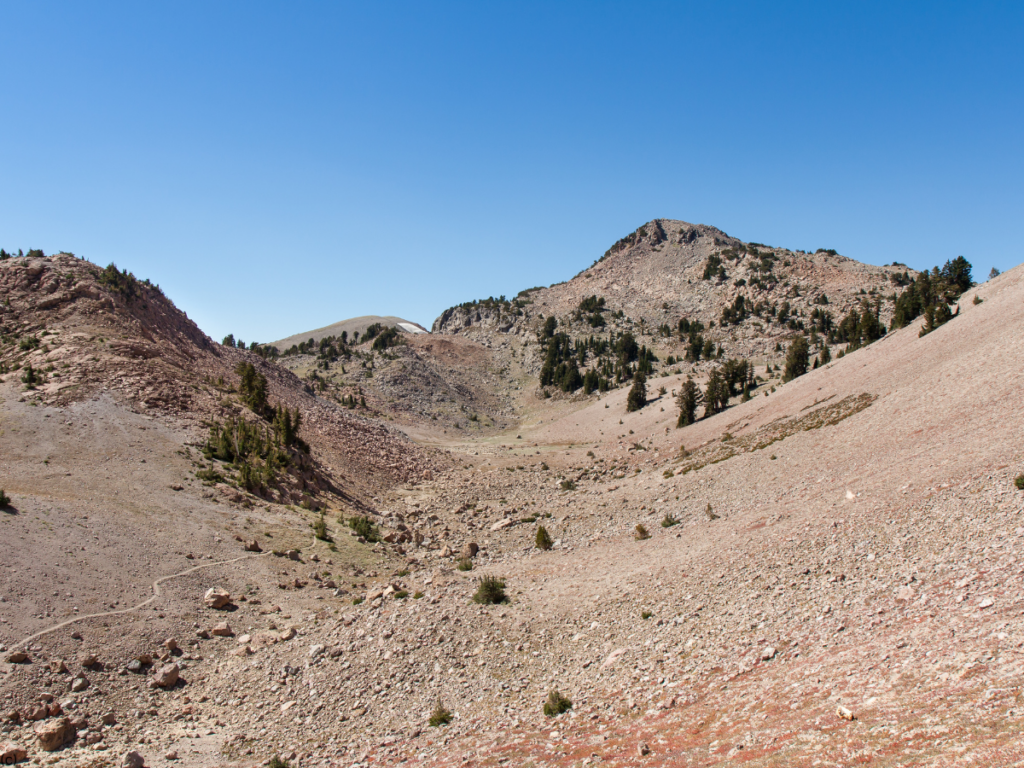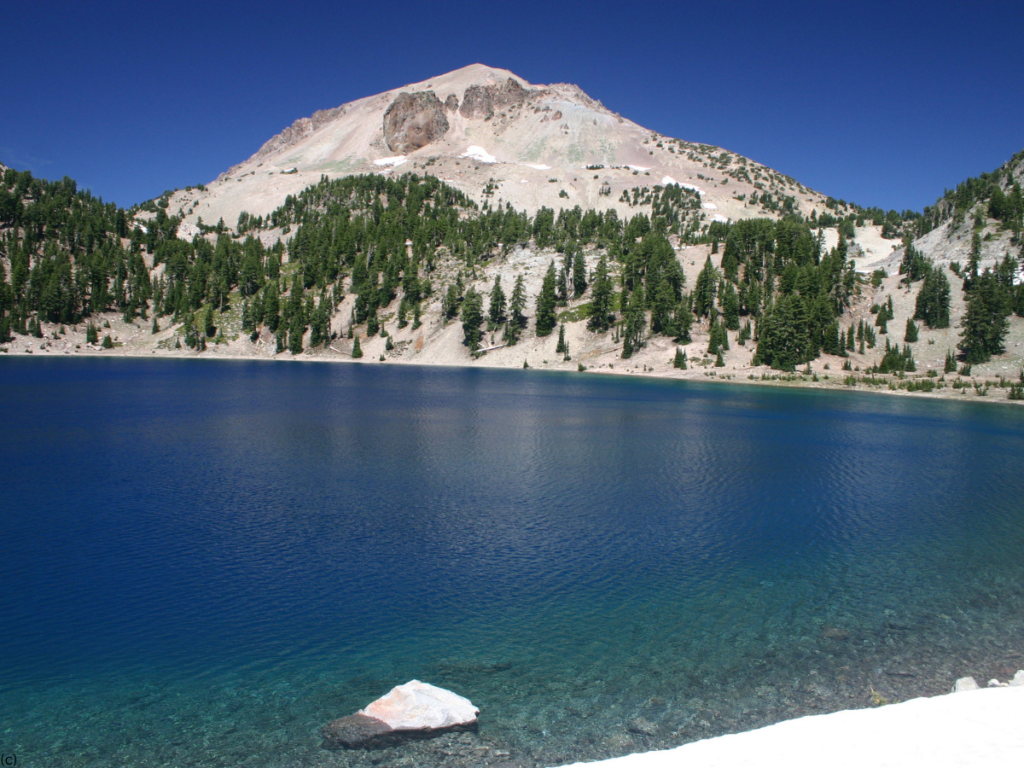
Lassen Volcanic National Park, located in Northern California, is one of the most geologically diverse and stunningly beautiful parks in the United States. Known for its active geothermal features, volcanic landscapes, and pristine alpine environments, the park offers a unique blend of natural wonders that make it a must-visit destination for outdoor enthusiasts and nature lovers alike. This comprehensive guide will explore everything you need to know about Lassen Volcanic National Park, from its geological history and main attractions to the best activities and tips for planning your visit.
1. A Brief Geological History of Lassen Volcanic National Park
Lassen Volcanic National Park is a living laboratory of volcanic activity, showcasing all four types of volcanoes found on Earth: shield, composite, cinder cone, and plug dome. The park’s centerpiece, Lassen Peak, is the largest plug dome volcano in the world and one of the most recently active volcanoes in the contiguous United States.
- The Formation of Lassen Peak: Lassen Peak was formed about 27,000 years ago during a period of volcanic activity that created the impressive plug dome structure we see today. It last erupted between 1914 and 1921, with the most significant explosion occurring on May 22, 1915. This eruption dramatically reshaped the landscape and deposited ash as far as 200 miles away.
- Geothermal Features: Lassen is part of the larger Cascade Range, which extends from northern California to southern British Columbia. The park is situated at the southernmost end of this volcanic range and is one of the few places in the world where you can witness such a variety of geothermal features. These include fumaroles (steam vents), hot springs, mud pots, and boiling pools, all of which are evidence of the area’s ongoing volcanic activity.
- Glacial Activity: In addition to its volcanic history, Lassen Volcanic National Park was shaped by glaciers during the last Ice Age. These glaciers carved out the park’s rugged terrain, leaving behind alpine lakes, U-shaped valleys, and moraines that add to the park’s diverse landscape.
2. Main Attractions and Points of Interest
Lassen Volcanic National Park is home to numerous attractions that highlight its volcanic and geothermal activity, as well as its scenic beauty. Here are some of the park’s must-see sites:
- Lassen Peak: Standing at 10,457 feet, Lassen Peak is the park’s most iconic landmark. A hike to the summit offers breathtaking views of the surrounding area and a close-up look at the remnants of the 1915 eruption. The trail is a strenuous 5-mile round trip with a 2,000-foot elevation gain, but the panoramic views from the top make it well worth the effort.
- Bumpass Hell: Named after Kendall Vanhook Bumpass, who discovered the area in the 1860s, Bumpass Hell is the largest hydrothermal area in the park. The 3-mile round-trip hike to Bumpass Hell takes you through an otherworldly landscape of boiling springs, fumaroles, and vibrant, mineral-stained soil. Boardwalks allow visitors to safely navigate this geothermal area while taking in its unique sights and sounds.
- Sulphur Works: Located near the park’s southwest entrance, Sulphur Works is one of the most accessible geothermal areas in Lassen Volcanic National Park. Here, you can see boiling mud pots, steam vents, and colorful mineral deposits right from the roadside. This area provides an excellent introduction to the park’s geothermal features.
- Cinder Cone: Cinder Cone is a remarkable volcanic feature located in the northeastern part of the park. The cone was formed by a series of eruptions between 1650 and 1851, creating a steep, symmetrical hill of loose volcanic rock. The hike to the top of Cinder Cone is challenging due to the loose gravel, but it rewards hikers with stunning views of the Painted Dunes, a series of colorful, oxidized lava flows, and the Fantastic Lava Beds.
- Manzanita Lake: This serene alpine lake is one of the most picturesque spots in the park. It’s a popular destination for fishing, kayaking, and picnicking, with Lassen Peak often reflected in its calm waters. A 1.5-mile loop trail around the lake offers an easy and scenic walk that’s perfect for all ages.
- King’s Creek Falls: This beautiful 30-foot waterfall is accessible via a moderate 3-mile round-trip hike. The trail takes you through lush forests and meadows, with the option to take the steeper “cascade” route that offers closer views of the falls. It’s a great spot for photography and enjoying the park’s natural beauty.
- Devastated Area: The Devastated Area is a stark reminder of Lassen Peak’s 1915 eruption. This area was buried under a massive rock avalanche and pyroclastic flows, and today, it serves as an outdoor exhibit showcasing the power of volcanic forces. A short, accessible trail features interpretive signs that explain the events of the eruption and its impact on the landscape.
- Boiling Springs Lake: Located in the Warner Valley area, Boiling Springs Lake is one of the largest hot lakes in the world, with temperatures that reach up to 125°F. The 1.8-mile round-trip hike to the lake offers visitors the chance to see this unique geothermal feature, as well as bubbling mud pots and steam vents along the way.
3. Outdoor Activities and Recreation
Lassen Volcanic National Park offers a wide range of outdoor activities for visitors to enjoy, whether you’re looking for adventure or relaxation.
- Hiking: With over 150 miles of trails, Lassen Volcanic National Park is a hiker’s paradise. Trails range from easy strolls to challenging summit hikes, offering something for everyone. In addition to the popular hikes mentioned earlier, other notable trails include the Mill Creek Falls Trail, the park’s highest waterfall, and the Brokeoff Mountain Trail, which offers stunning views from the second-highest peak in the park.
- Camping: The park offers several campgrounds that provide a variety of camping experiences, from developed sites with amenities to more primitive, backcountry camping. Manzanita Lake Campground is the most popular, offering easy access to the lake and nearby trails. For a more secluded experience, Butte Lake Campground provides access to the Cinder Cone area and is less crowded.
- Wildlife Watching: Lassen Volcanic National Park is home to a diverse array of wildlife, including black bears, mule deer, bobcats, and a variety of bird species. Early morning and late evening are the best times to spot wildlife, particularly around the park’s meadows and lakes. Keep a safe distance from all wildlife and follow park regulations to ensure a safe and respectful experience.
- Fishing: Fishing is a popular activity in the park, with several lakes and streams stocked with rainbow, brook, and brown trout. Manzanita Lake and Butte Lake are especially popular spots for anglers. Be sure to obtain a California fishing license and familiarize yourself with the park’s fishing regulations before casting your line.
- Stargazing: Due to its remote location and high elevation, Lassen Volcanic National Park offers some of the best stargazing opportunities in California. The park is designated as a Dark Sky Park, meaning it has minimal light pollution, making the night skies incredibly clear. The annual Lassen Dark Sky Festival, held each summer, celebrates this with ranger-led programs, telescope viewings, and astronomy talks.
- Winter Activities: In the winter, Lassen Volcanic National Park becomes a snowy wonderland, offering a variety of winter activities. Snowshoeing and cross-country skiing are popular ways to explore the park’s snow-covered trails, with the snow-capped peaks providing a stunning backdrop. The park’s southwest entrance remains open year-round, providing access to snow play areas and winter camping.
4. Flora and Fauna
Lassen Volcanic National Park’s diverse ecosystems support a wide variety of plant and animal life, making it a rich destination for nature lovers.
- Flora: The park’s vegetation varies with elevation, from dense forests of ponderosa pine, Douglas fir, and lodgepole pine in the lower elevations to subalpine meadows filled with wildflowers at higher elevations. During the summer, the park’s meadows burst into color with lupines, Indian paintbrush, and other native flowers. The Lassen area is also known for its unique assemblage of volcanic and alpine plant species, some of which are endemic to the region.
- Fauna: The park’s wildlife includes a mix of large mammals, small mammals, and a variety of birds. Black bears are one of the most commonly spotted large animals, often seen foraging in the park’s meadows and forests. Mule deer are also frequently observed, especially during the summer months. Smaller mammals include squirrels, chipmunks, and the elusive bobcat. Birdwatchers can enjoy sightings of species like the mountain bluebird, Steller’s jay, and Clark’s nutcracker.
- Ecosystems: Lassen Volcanic National Park encompasses several distinct ecosystems, including montane forests, subalpine and alpine zones, and geothermal areas. Each ecosystem supports a unique community of plants and animals adapted to the park’s varying conditions. The geothermal areas, in particular, are home to extremophiles—organisms that thrive in extreme environments, such as the acidic and boiling waters found in Bumpass Hell and other hydrothermal sites.
5. Tips for Visiting Lassen Volcanic National Park
To make the most of your visit to Lassen Volcanic National Park, here are some practical tips and recommendations:
- Best Time to Visit: The best time to visit Lassen Volcanic National Park is during the summer and early fall (June to October) when all the park’s roads, trails, and facilities are typically open. Snow can linger at higher elevations well into June, so plan your visit accordingly. If you enjoy winter sports, the park’s winter season (December to April) offers excellent opportunities for snowshoeing and skiing.
- Weather and Climate: Lassen Volcanic National Park’s weather can be unpredictable, especially at higher elevations. Summer temperatures range from 50°F to 80°F during the day, with cooler nights. In winter, temperatures can drop well below freezing, and the park receives heavy snowfall. Be prepared for changing weather conditions and dress in layers, especially if you plan to hike to higher elevations.
- Park Entrance and Fees: The park has several entrances, with the most popular being the northwest entrance near Manzanita Lake and the southwest entrance near the Kohm Yah-mah-nee Visitor Center. An entrance fee is required to access the park, which can be purchased at the entrance stations or online. Annual passes and America the Beautiful passes are also accepted.
- Safety Considerations: Due to the park’s geothermal activity, it’s important to stay on designated trails and boardwalks in hydrothermal areas. Venturing off-trail can be dangerous due to the thin crust and boiling water just below the surface. In addition, wildlife encounters are possible, so keep a safe distance and never feed or approach animals. Bear-proof food storage is required in campgrounds and recommended for all visitors.
- Accommodations and Lodging: While there are no hotels within the park, nearby towns like Chester, Mineral, and Shingletown offer a variety of lodging options, including motels, cabins, and bed-and-breakfasts. Camping is available within the park, with several campgrounds offering tent and RV sites. Reservations are recommended, especially during the peak summer season.
- Visitor Centers and Services: The Kohm Yah-mah-nee Visitor Center, located near the southwest entrance, is the park’s main visitor center and is open year-round. It offers exhibits on the park’s geology, a gift shop, and a café. The Loomis Museum, located near Manzanita Lake, is open seasonally and provides information on the park’s history, geology, and wildlife. Both visitor centers offer ranger-led programs and are excellent starting points for exploring the park.
- Leave No Trace: Lassen Volcanic National Park is a pristine natural area, and it’s important to practice Leave No Trace principles to help preserve its beauty. Pack out all trash, stay on designated trails, and minimize your impact on the environment. By doing so, you help ensure that future generations can enjoy the park’s wonders.
6. Nearby Attractions and Day Trips
If you have extra time during your visit to Lassen Volcanic National Park, consider exploring some of the nearby attractions and day trip options.
- Burney Falls: Located about an hour north of the park, Burney Falls is a stunning 129-foot waterfall in McArthur-Burney Falls Memorial State Park. The falls are fed by underground springs, creating a constant flow of water that is especially impressive in the spring and early summer. A short, easy trail leads to the base of the falls, where you can enjoy the cool mist and take in the beauty of this natural wonder.
- Subway Cave: Just outside the park’s northwest boundary, Subway Cave is a lava tube that offers a fascinating underground exploration experience. The cave is about 1/3 of a mile long and features interesting lava formations and cool temperatures year-round. Bring a flashlight or headlamp, as the cave is dark and has uneven terrain.
- Lake Almanor: Located about 30 miles south of the park, Lake Almanor is a popular destination for boating, fishing, and swimming. The lake’s scenic surroundings and warm summer temperatures make it a great spot for a relaxing day trip. Several campgrounds and picnic areas are available around the lake, as well as opportunities for hiking and biking.
- Hat Creek: Hat Creek is a picturesque stream located near the northern entrance of Lassen Volcanic National Park. It’s known for its excellent trout fishing and beautiful scenery, with several campgrounds and picnic areas along its banks. The Hat Creek Rim Overlook offers panoramic views of the Cascade Range, including Lassen Peak and Mount Shasta.
- Mt. Shasta: For those looking for more volcanic exploration, Mt. Shasta is located about two hours north of Lassen Volcanic National Park. This massive stratovolcano is the second-highest peak in the Cascade Range and offers hiking, skiing, and mountaineering opportunities. The town of Mount Shasta, located at the base of the mountain, is a charming destination with shops, restaurants, and lodging.
Lassen Volcanic National Park is a hidden gem in California’s natural landscape, offering visitors a unique opportunity to explore an active volcanic region with stunning scenery and diverse ecosystems. Whether you’re hiking to the summit of Lassen Peak, marveling at the geothermal wonders of Bumpass Hell, or simply enjoying the tranquility of Manzanita Lake, the park’s natural beauty and geological significance are sure to leave a lasting impression.
With its rich history, abundant outdoor activities, and breathtaking landscapes, Lassen Volcanic National Park is a destination that deserves a place on every nature lover’s bucket list. So pack your hiking boots, bring your camera, and get ready to discover the volcanic wonders and serene beauty of Lassen Volcanic National Park.
